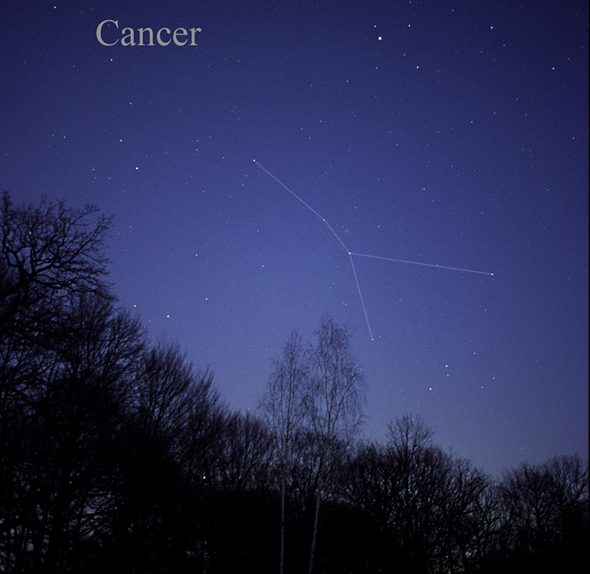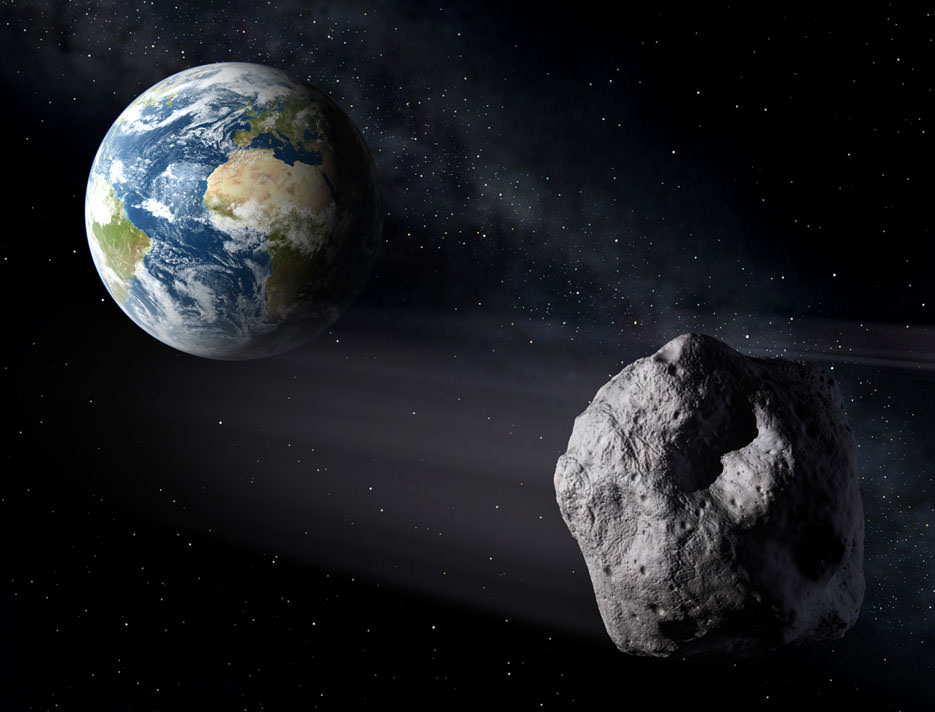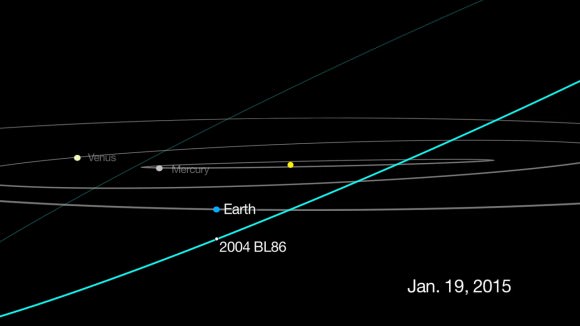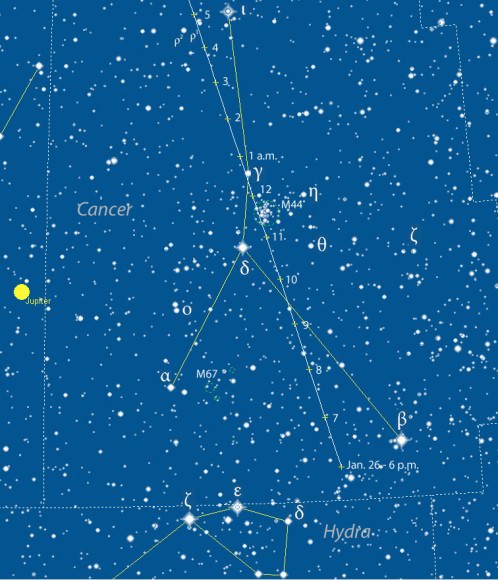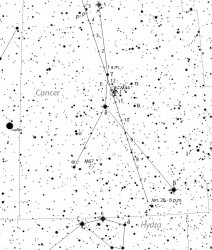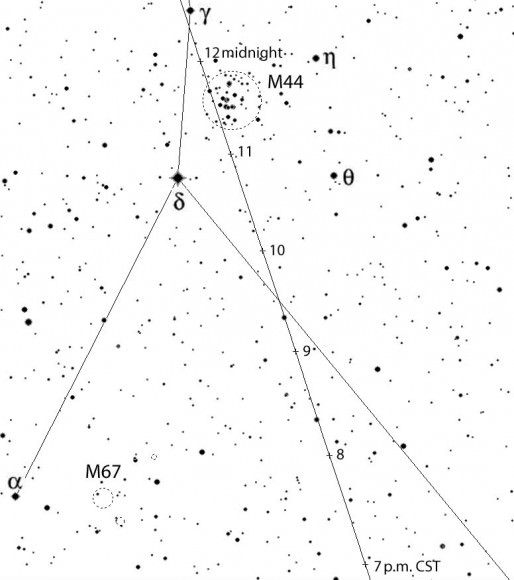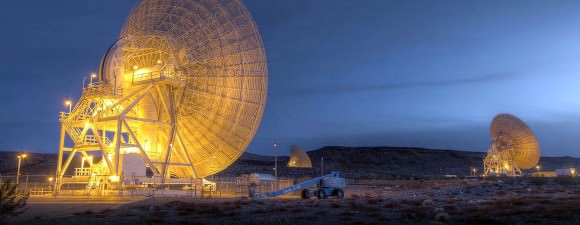Welcome back to Constellation Friday! Today, we will be dealing with one of the best-known constellations, that crabby asterism known as “Cancer”!
In the 2nd century CE, Greek-Egyptian astronomer Claudius Ptolemaeus (aka. Ptolemy) compiled a list of the then-known 48 constellations. His treatise, known as the Almagest, would be used by medieval European and Islamic scholars for over a thousand years to come. One of these constellations is Cancer, which is represented by “the Crab”.
As one of the twelve constellations of the zodiac, this medium-sized constellation is located on the ecliptic plane, where it is bordered by Gemini to the west, Lynx to the north, Leo Minor to the northeast, Leo to the east, Hydra to the south, and Canis Minor to the southwest. Today, it is one of the 88 constellation that are recognized by the International Astronomical Union (IAU) today.
Name and Meaning:
In mythology, Cancer was part of the Twelve Labors of Hercules. While Hercules was busy fighting the multi-headed monster (Hydra), the goddess Hera – who did not like Hercules – sent the Crab to distract him. Cancer grabbed onto the hero’s toe with its claws, but was crushed by Hercule’s mighty foot. Hera, grateful for the little crustacean’s heroic sacrifice, gave it a place in the sky. Given that the crab did not win, the gods didn’t give it any bright stars.
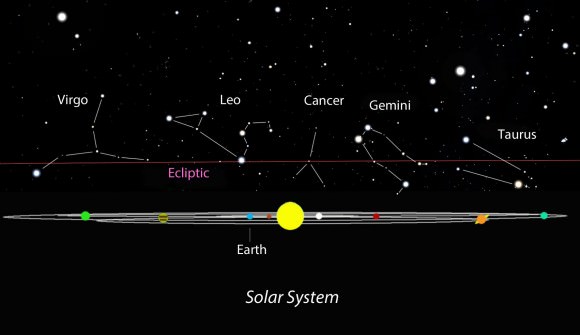
History of Observation:
The first recorded examples of the Cancer constellation come from the 2nd millennium BCE, where it was known to Akkadian astronomers as the “Sun of the South”. This was most likely due to its position at the summer solstice during ancient antiquity. By classical antiquity, Cancer came to be called the “Gate of Men”, based on the beleif that it was the portal through which souls came and went from the heavens.
Given its relative faintness in the night sky, Cancer was often described as the “Dark Sign” throughout history. For instance, the medieval Italian poet Dante alluded to its faintness and position of Cancer in heavens as follows (in the Paradiso section of The Divine Comedy):
“Then a light among them brightened,
So that, if Cancer one such crystal had,
Winter would have a month of one sole day.”
Cancer’s stature as a constellation of the Zodiac has remained steadfast over the millennia, thought its position has changed. Over two thousand years ago, the sun shone in front of the constellation during the Northern Hemisphere’s summer solstice. Today, the Sun resides in front of the constellation Taurus when the summer solstice sun reaches its northernmost point.
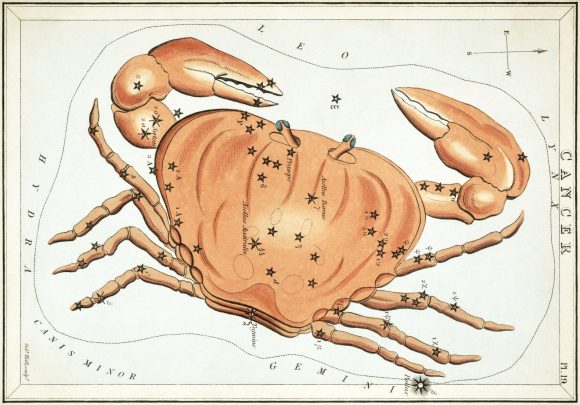
Notable Features:
Though comparatively faint, the Cancer constellation contains several notable stars. For starters, there is Beta Cancri, which is also known by the Arabic name of Al Tarf (“the eye” or “the glance”). Beta Cancri is the brightest star in Cancer and is about 660 times brighter than our Sun.
This K-class orange giant star is about 290 light years away from Earth, and is part of a binary system that includes a 14th magnitude star. This second star is so far away – about 65 times the distance of Pluto from the Sun – that their orbital period is at least 76,000 years!
Then there is Delta Cancri – an orange giant star approximately 180 light-years away. This is the second-brightest star in the Cancer constellation, and also where the famous Beehive Cluster (Messier 44) can be found (see below). It is also known by its Latin name of Asellus Australis, which means “southern donkey colt” (or “southern ass” if you’re feeling comedic!).
A bit further north is Gamma Cancri, an A-type white subgiant located 158 light years from Earth. Its Latin name is Asellus Borealis, which means (you guessed it!) “northern ass”. Both this star and Delta Cancri are significant because of their mythological connection and proximity to Messier 44.
Next up is Alpha Cancri, the fourth brightest star in the constellation, which is also known as Acubens. The star also goes by the names of Al Zubanah or Sertans, which are derived from the Arabic az-zub?nah (which means “claws”), while Sertan is derived from sara??n, which means “the crab.” Located approximately 174 light years from Earth, Alpha Cancris is actually a multiple star system – Alpha Cancri A and B (a white A-type dwarf and an 11th magnitude star, respectively.
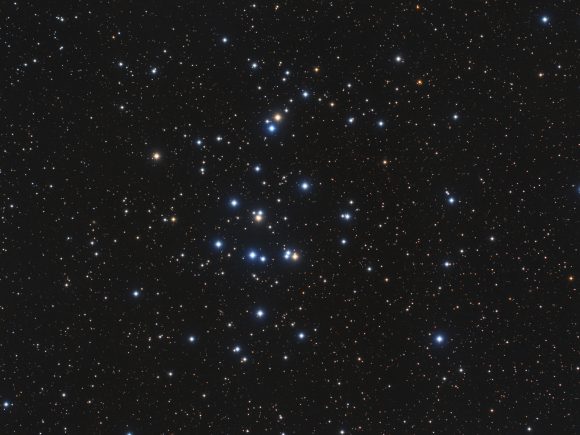
Cancer is also home to many Deep Sky Objects. For instance, there is the aforementioned Beehive Cluster (Messier 44). This open cluster is the nearest of its type relative to our Solar System, and contains a larger star population than most other nearby clusters. Under dark skies the Beehive Cluster looks like a nebulous object to the unaided eye; thus it has been known since ancient times.
The classical astronomer Ptolemy called it “the nebulous mass in the heart of Cancer,” and it was among the first objects that Galileo studied with his telescope. The cluster’s age and proper motion coincide with those of the Hyades stellar association, suggesting that both share a similar origin. Both clusters also contain red giants and white dwarfs, which represent later stages of stellar evolution, along with main sequence stars of spectral classes A, F, G, K, and M.
So far, eleven white dwarfs have been identified, representing the final evolutionary phase of the cluster’s most massive stars, which originally belonged to spectral type B. Brown dwarfs, however, are extremely rare in this cluster, probably because they have been lost by tidal stripping from the halo.
Then there’s M67, which can be viewed due west of Alpha Cancri. M67 is not the oldest known galactic cluster, but there are very few in the Milky Way known to be older. M67 is an important laboratory for studying stellar evolution, since all its stars are at the same distance and age, except for approximately 30 anomalous blue stragglers, whose origins are not fully understood.
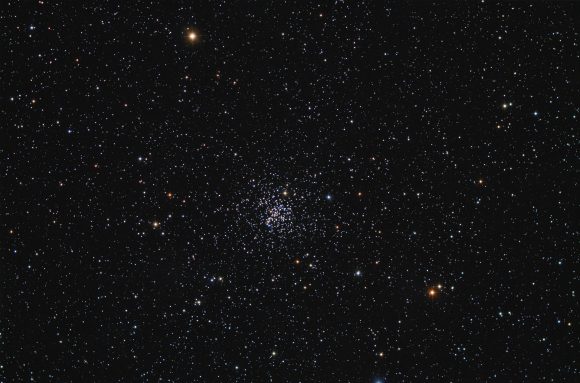
M67 has more than 100 stars similar to the Sun and many red giants, though the total star count has been estimated at over 500. The cluster contains no main sequence stars bluer than spectral type F, since the brighter stars of that age have already left the main sequence. In fact, when the stars of the cluster are plotted on the Hertzsprung-Russell diagram, there is a distinct “turn-off” representing the stars which are just about to leave the main sequence and become red giants.
It appears that M67 does not contain an unbiased sample of stars. One cause of this is mass segregation, the process by which lighter stars (actually, systems) gain speed at the expense of more massive stars during close encounters, which causes the lighter stars to be at a greater average distance from the center of the cluster or to escape altogether.
Then there’s NGC 2775, which is positioned some 60 million light years away. NGC 2775 is a peculiar blend of spiral galaxy with a smooth bulge in the center. The star formation is confined to this ring of tightly wound arms, and the galaxy has been the location of 5 supernovae explosions in the past 30 years!
Next up is DX Cancri, a faint, magnitude 14, cool red dwarf star that has less than 9% the mass of our Sun. It is a flare star that has intermittent changes in brightness by up to a five-fold increase. This star is far too faint to be seen with the naked eye, even though it is the 18th closest star system to the Sun at a distance of 11.82 light years, and is the closest star in the constellation Cancer.
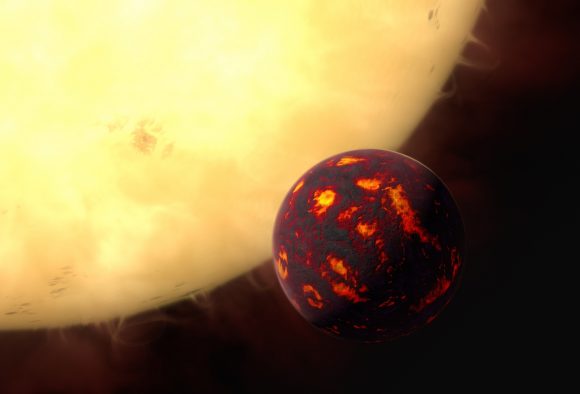
Now set your mark on 55 Cancri (located at RA 8 52 35 Dec +28 19 59). Also known as Rho1 Cancri, this binary star system is located approximately 41 light-years away from Earth and has a whole solar system of its own! The system consists of a yellow dwarf star and a smaller red dwarf star, separated by over 1,000 times the distance from the Earth to the Sun.
As of 2007, five extrasolar planets have been confirmed to be orbiting the primary – 55 Cancri A (the yellow dwarf). The innermost planet is thought to be a terrestrial “super-Earth” planet, with a mass similar to Neptune, while the outermost planets are thought to be Jovian planets with masses similar to Jupiter.
Finding Cancer:
As one of the 12 constellations along the ecliptic, Cancer is relatively easy to find with small telescopes and even binoculars. It lies in the second quadrant of the northern hemisphere (NQ2) and can be seen at latitudes between +90° and -60°. It occupies an area of 506 square degrees, making it the 31st largest constellation in the night sky.
There is only one meteor shower associated with the constellation of Cancer. The peak date for the Delta Cancrids is on or about January 16th. The radiant, or point of origin is just west of Beehive. It is a minor shower and the fall rate averages only about 4 per hour and the meteors are very swift.
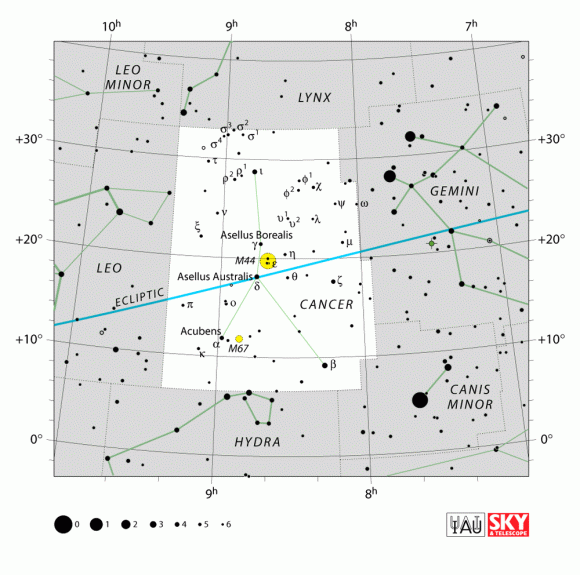
Like all of the traditional constellations that belong to the Zodiac family, the significance of Cancer has not waned, despite the passage of several thousand years. Best of luck finding it, though you won’t need much!
We have written many interesting articles about the constellation here at Universe Today. Here is What Are The Constellations?, What Is The Zodiac?, and Zodiac Signs And Their Dates.
Be sure to check out The Messier Catalog while you’re at it!
For more information, check out the IAUs list of Constellations, and the Students for the Exploration and Development of Space page on Cancer and Constellation Families.
Sources:

